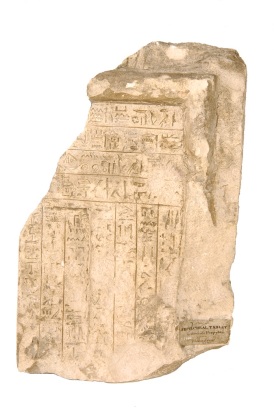By Judy Aitken, Curator of the Cuming Museum
For more than 2000 years, Southwark has been a place of settlement, business and trade. The Romans established a foothold on the south bank of the Thames shortly after establishing their city of Londinium on the north bank from around AD50.
This southern location, around present day Borough High Street, then grew into a major “suburb” feeding the new trade and travel routes to the South coast and thrived under nearly 400 years of Roman rule. Sites and artefacts have been found all over Roman Southwark helping us to build a picture of this fascinating period.

The Cuming Museum has over 600 items of Romano British archaeology in its collections, some dating from the earliest days of archaeological excavation. Early digs in Egypt tended to be focussed on excavating treasure for profit, rather than intellectual understanding and most found their way to traders.
Richard Cuming, the founder of the collection, would have purchased or traded for curios from these digs. Henry Syer Cuming, his son, was much more interested in archaeology as a discipline. But even so was keen to take items given to him by workmen who were themselves “excavating” London for new roads, embankments, tube tunnels and other developments. Henry tended towards Roman British finds rather than Ancient Egypt and there are a large number of small, often personal artefacts from all over London.
The rest of the Cuming’s archaeology collections come from digs during the 20th century. Professional archaeologists such as Kathleen Kenyon, who went on to make her name as one of the world’s foremost archaeologists in places such as Jordan, carried out extensive excavation of sites around Borough High Street. Look out for a blog about her soon!
The Southwark and Lambeth Archaeological Excavation Committee (SLAEC), which continues to this day, also carried out extensive excavations of sites. Much of the material came to the Cuming Museum as the nearest place of repository.
However, in the late 20th century the main place of repository for archaeological excavation material was the Museum of London. The Cuming’s collections still contain large amounts of material from Kenyon’s and SLAEC’s digs however, and we are working with Museum of London to review it all.

London Borough of Southwark still supervises major digs in the borough, along with professional archaeology companies such as Pre-Construct and Museum of London Archaeology (MOLA) as the north of the borough in particular is rich in archaeological evidence. Companies who want to build or alter premises have to have an archaeological survey carried out and if there are finds then work can be paused in order for archaeologists to record and preserve the sites and any material.
“Pots and Prayers” is a new free exhibition at Morley College, giving a glimpse of Southwark’s Roman story by showcasing from the collections of the Cuming Museum.
It will run from Wednesday 1 March to Wednesday 19 April 2017 and will be in the college’s main foyer.
Events during the exhibition run include talks, walks around Roman Southwark and creative workshops. Families will be able to make Roman mosaics, try a toga or create a Roman city.
While the exhibition only scratches the surface, you will be able to learn a lot more during Morley’s 10 week Roman London course, starting Wednesday 26 April 2017.


 My theme for January was Janus – the Roman god of beginnings, doorways and the New Year; after whom January is named. He is famous as the god with two faces – one looking into the future, and the other on the back of his head peering into the past. Janus might not be an ‘A-lister’ in the Roman pantheon, being less well known than figures with planets named after them like Jupiter, Mars and Venus; but even so he was a significant figure in Roman mythology, and the Cuming collection actually features a number of objects directly related to him. These come in the form of coins bearing his likeness; and even one showing his temple, from the reign of Nero. The story of Janus’ temple tells that its gates stood open when Rome was at war, but closed in times of peace – and they were rarely closed.
My theme for January was Janus – the Roman god of beginnings, doorways and the New Year; after whom January is named. He is famous as the god with two faces – one looking into the future, and the other on the back of his head peering into the past. Janus might not be an ‘A-lister’ in the Roman pantheon, being less well known than figures with planets named after them like Jupiter, Mars and Venus; but even so he was a significant figure in Roman mythology, and the Cuming collection actually features a number of objects directly related to him. These come in the form of coins bearing his likeness; and even one showing his temple, from the reign of Nero. The story of Janus’ temple tells that its gates stood open when Rome was at war, but closed in times of peace – and they were rarely closed.






